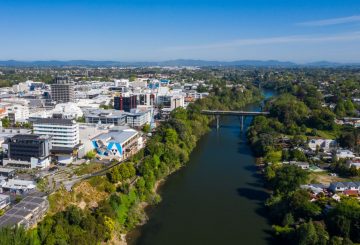Thị trưởng Tory Whanau đã ủng hộ ý tưởng đưa ra mức giá cho đất trống ở trung tâm thành phố. Hội đồng thành phố Wellington đã bỏ phiếu để duy trì tỷ lệ hiện tại cho các doanh nghiệp, điều này có nghĩa là mức tăng lãi suất dự kiến cho cư dân có thể không cao như suy nghĩ trước đây.
Trong một cuộc họp của Ủy ban Tài chính và Kế hoạch dài hạn, các quyết định ban đầu đã được đưa ra liên quan đến lãi suất mới và những thay đổi đối với chính sách giảm lãi suất của hội đồng. Một đề xuất giảm chênh lệch lãi suất thương mại từ 3,7 đô la xuống còn 3,25 đô la đã làm dấy lên một cuộc thảo luận sôi nổi. Ủy viên Hội đồng Tony Randle nhấn mạnh rằng các doanh nghiệp bên ngoài khu thương mại trung tâm đang phải vật lộn với mức giá thương mại cao.
Ủy viên Hội đồng Ray Chung bày tỏ sự ủng hộ của mình đối với các doanh nghiệp, nhưng cũng chỉ ra rằng việc thay đổi mức giá sẽ không tạo ra sự khác biệt đối với ông vì người thuê sẽ là người trả tiền cho nó. Ông bày tỏ sự khó chịu của mình với ý tưởng về việc những người trả thuế nhà ở phải trả nhiều tiền hơn để hỗ trợ sự thay đổi này.
Ủy viên Hội đồng Ben McNulty gợi ý rằng chính phủ mới sẽ cung cấp hỗ trợ cho các doanh nghiệp theo những cách khác, chẳng hạn như loại bỏ Thỏa thuận trả lương công bằng và không tăng thuế xăng dầu. Ông lập luận rằng các biện pháp này sẽ có ý nghĩa hơn đối với cộng đồng doanh nghiệp.
Ủy ban cuối cùng đã bỏ phiếu chống lại việc giảm chênh lệch lãi suất thương mại. Tuy nhiên, họ đã phê duyệt tất cả các thay đổi khác, bao gồm cả việc đưa ra mức giá cho đất trống ở trung tâm thành phố. Thị trưởng Tory Whanau đề xuất một sửa đổi để tăng chênh lệch lên 5 đô la trong mức giá chung cho mỗi 1 đô la mà một bất động sản nhà ở có cùng giá trị phải trả.
Hội đồng cũng quyết định trì hoãn tỷ lệ đối với một số tòa nhà dân cư dễ bị động đất cho đến khi chúng được củng cố. Sự hoãn này sẽ có sẵn trong tối đa ba năm trước khi công việc tăng cường được thực hiện.
Các quyết định được đưa ra trong cuộc họp sẽ được sử dụng để hướng dẫn công việc tiếp theo về tỷ lệ trong Kế hoạch dài hạn 2024-34 của hội đồng. Tham vấn chính thức về dự thảo Kế hoạch dài hạn sẽ diễn ra vào tháng 4 năm 2024 và bất kỳ thay đổi nào về lãi suất sẽ được thực hiện từ tháng 7 năm 2024.





























































